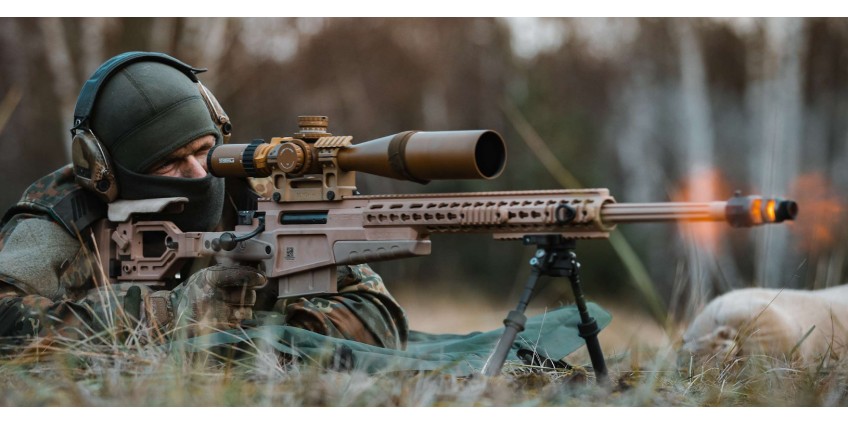
This product is not exportable outside the United States.
By adding this item to cart, you agree and acknowledge the Export Policy and confirm that you are a person in the United States with no intentions to illegally export the device.
This product is not exportable outside the United States.
By adding this item to cart, you agree and acknowledge the Export Policy and confirm that you are a person in the United States with no intentions to illegally export the device.


0

0


Humanity has survived, thanks to several essential qualities. Some are unique, such as our brains. Some are widely distributed among other representatives of the animal world, such as our relentless desire for competition, struggle, and constant race. Thanks to this unique combination of qualities, we have become who we are, taking the top of the food pyramid.
The desire to compete is the primary motivator for each of us. Our whole life is an endless race - from birth to death. And, no, you were lied to in kindergarten. There is only one winner. One for every race, every race, every raid, and every challenge.
“Here is every winner” or “Victory is not the main thing; the main thing is participation” - all these phrases are attempts to calm the losers and everyone who did not enter the playoffs. Because there is always one winner, he will go down in history and be leveled by all the following participants in the endless race.
As Willie Beamen said in Oliver Stone's masterpiece Any Given Sunday, "No one remembers who came second in the Olympics." This is a cruel but actual truth. It is not in vain that we honor athletes so much because, in sports, it is straightforward to determine who is who, thanks to statistics that do not lie. Tom Brady is the best quarterback in history. Try to argue that fact, but all your arguments are shattered by a monolith of statistics and his seven rings for winning the Super Bowl. What can you say to this? Who can be more relaxed than a guy with more SB wins than any other team, more than even the Pittsburgh Steelers? And you can think of a long list of quarterbacks: Johnny Unitas, Bart Starr, Terry Bradshaw, Joe Montana, Steve Young, Brett Favre, Peyton Manning, and Drew Brees. We can continue this list for a long, but the seven rings will always be the key argument.
What kind of sport do you not take? Will the picture be identical? The NBA will always be associated with Michael Jordan. MLB and Babe Ruth would always be synonyms. Alex Ovechkin may set one record after another in the NHL, but he will never replace Wayne Gretzky in the pantheon of hockey gods. This is true in sports and other areas of our lives. Statistics and indicators are less reliable and relevant. But, where individualism is essential and personal achievement exemplary, you will always find the best.
There are no more individual professionals in the art of war than the sniper. Even though modern shooters usually work in pairs, that single shot is made by one person, ready to accept all the consequences and all responsibility for it. On the other hand, he takes all the glory and admiration for his filigree skill and accuracy. These are the people we want to talk about today, those who, in modern remote, high-tech warfare conditions, keep the enemies of democracy at bay, such as ISIS terrorists or Russian Nazis, preventing them from relaxing even in their trenches.
In the modern army, being a sniper is not just a military position but a calling. To call yourself that one desire is not enough. The requirements are very high and depend on personal and professional qualities, as no specialization exists.
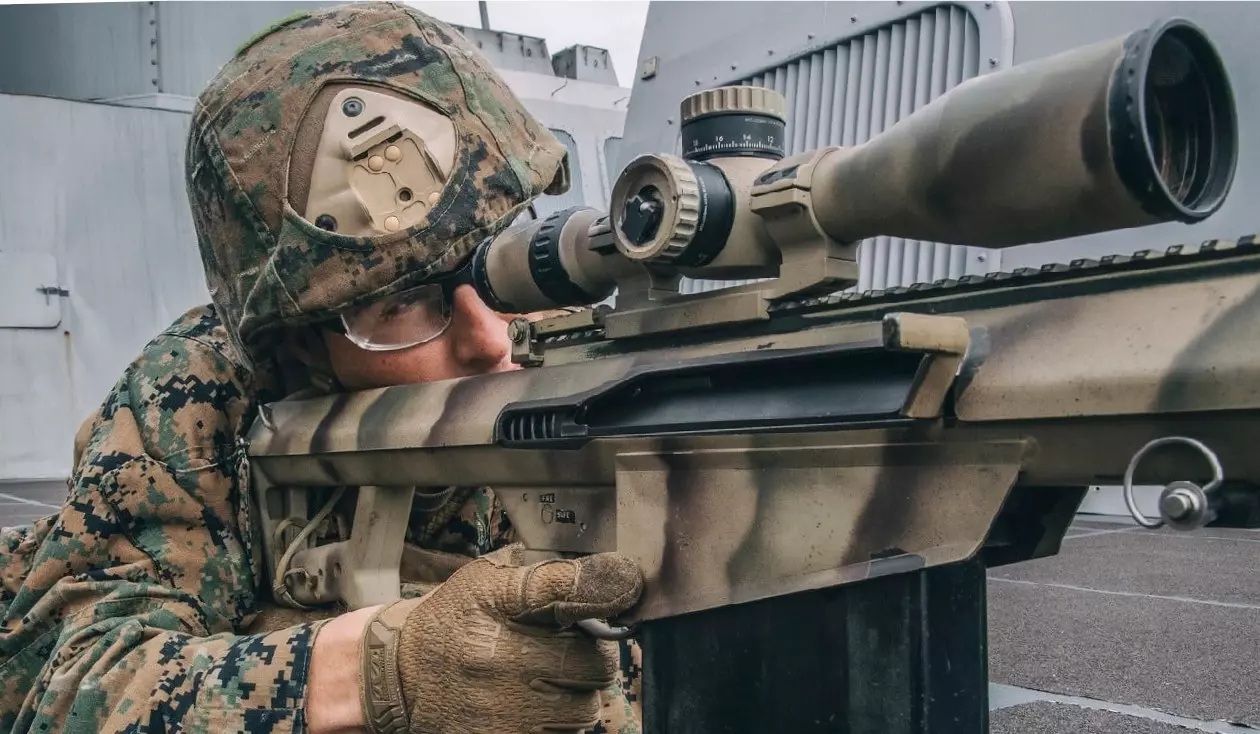
To enter the elite of the US Army, you must meet several requirements, some of which are very specific. You must have a perfect personal file and track record. Without it, the path to the sniper training school in Fort Benning, Georgia, will be closed to you. In addition to an ideal personal file, you will need a testimonial and a recommendation from your commander. If you have all this, then the bureaucratic stage has been passed, and you must meet the high demands of a physical nature. One of the most critical factors is perfect vision. Any visual impairment, such as color blindness or loss of visual acuity in certain weather conditions, will block your path to the profession. 20/20 - nothing less.
Such requirements are not just a whim of the army leadership. The ideal physical shape will significantly help you both in training and passing the standards, not to mention the performance of combat missions in the future. Challenges are waiting for you, compared to which scouting combine and challenging drills in the NFL will seem like entertainment for the evening—running, rope climbing, cross-country, heavyweight work, and our favorite, the challenge of running upstairs with a load comparable to your weight.
Now, all the demands seem justified. Endurance that allows you to go without water and food for a long time, independence from tobacco and alcohol, resistance to cold and quick thinking - in our case, these are not superpowers or an advantage. Without this, you will not survive on the path to training as a sniper. And is it worth specifying that you must be an expert shooter from an M16A1 / M16A2 automatic rifle?
Surprisingly, such an important position did not have systemic training algorithms until 1975. Instead, there were algorithms and training methodology. They just were not used in peacetime. Schools of snipers were formed during the period of active hostilities. As you understand, this is not a very effective and deliberate policy. Therefore, for almost 50 years, scout sniper schools have been operating in nearly every division. With a training period of eleven weeks, the standard school can train 120 specialists per year. What are they actively doing? With modern military doctrine, this is another recognition of the incredibly high role of the sniper in the war.
As pointed out, applicants must meet incredibly high qualification criteria. But, during training, it will not be easier for them. Even if we talk about the number of shot rounds, their number will be huge. But this is not the biggest problem, as future snipers shoot from various positions and distances. There are more than a thousand rounds on multiple targets, no closer than three hundred yards with daily qualifying shooting. Afterward, they wait for the final exam, which deserves a separate article.
But do not forget that shooting is not the main task of a sniper. Although it sounds paradoxical, snipers are primarily scouts, survivalists, tacticians, and resourceful, multifunctional soldiers. Therefore, most forced learning takes up the lessons of ... everything. Work with a partner, interact with electronics and radio stations, camouflage on the ground and movement methods, medical care, and meteorology. At the end of the training, the sniper is a living military encyclopedia.
But, before the end of the training, students are waiting for the exam, which begins with the "hell week." During these five days, the instructors concluded all the subjects and areas that the soldier was taught. And, in the end, finish.
As you can see, becoming a sniper is already a feat. Anyone performing military tasks as a sniper can be proud of himself and rank himself among the modern army elite. But even among such superhumans, some stand out, first among equals, the best of the best. Our story today is about them.
We will consider only the twentieth century and the present, but this does not mean that there were no fighters worthy of mention before that. History has preserved their names, and you can read about some of them in our article US Army Sniper Equipment https://www.agmglobalvision.com/us-army-sniper-equipment.
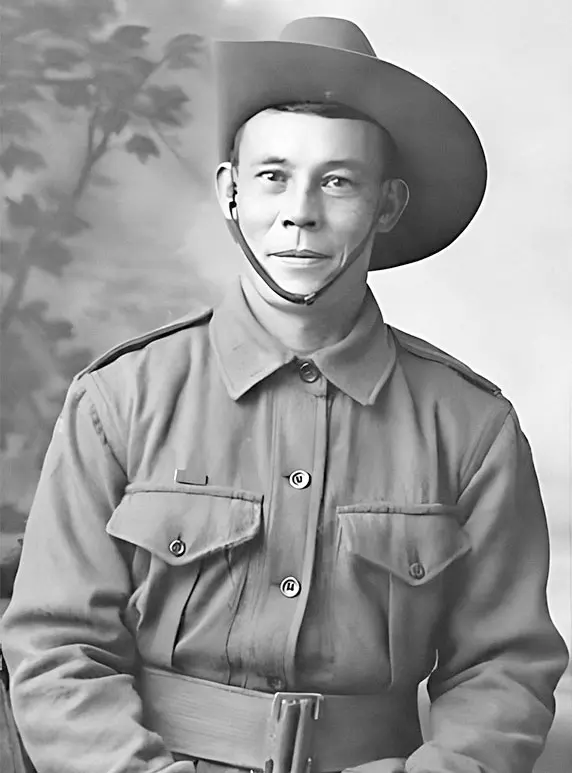
The Great War was a turning point in military history. We can safely say that at that moment, many revolutions of various sizes completely changed the appearance of subsequent wars. The appearance of the sniper on the chessboard of combat operations does not belong to this period. There were long-range shooters before, during the American Civil War, Anglo-Boer Wars, and other conflicts. But, during WWI, this specialty acquired its ideological and tactical base. At the same time, countermeasures against snipers were developed. And at the same time, the first stars appear among the well-aimed shooters.
The Anglo-Chinese Australian rose to prominence during the Gallipoli Campaign as one of the deadliest soldiers of the entire war. His achievements are confirmed not only by orders and reports of command but also by nicknames. William "Billy" Edward Sing was one of the first such soldiers. His colleagues called him 'The Assassin' or 'The Murderer,' he received the second nickname for his cold-blooded and dismissive attitude towards his goals.
Regarding Billy Sing's professional achievements, the data is somewhat different. Much of this confusion concerns the various methods of counting enemy soldiers killed. The elimination of the target was estimated only if the spotter confirmed the fall of the target. At the same time, the second shot was prohibited since the risk of being detected was too significant. This led to the fact that the statistical records of the regiment initially appeared to confirm the elimination of 150 targets. A month later, Sing's achievements were revised, and he was assigned 201 kills, thanks to the addition of kills that were not confirmed according to the accepted algorithm.
The command of the talented Australian shooter said that the list of his achievements is much longer - at least 300 eliminated enemy soldiers. William "Billy" Edward Sing has become an absolute superstar. Newspapers wrote about him, not only English and Australian ones, but also American ones. Awards marked his exploits, and the name became a household name.
Later, he was transferred to the Western Front, where Billy endured several wounds and embarrassing moments involving prostitutes and led his anti-sniper unit. The hero's health dictated the counter-sniper service, undermined by the consequences of the experienced gas attack and wounds. Very soon, he was sent to rest precisely because of injuries.
The life of William “Billy” Edward Sing can hardly be called happy. He did not find family happiness and died alone. There were no medals and awards next to him.
Despite his ambiguous personality and difficult life, Billy Sing remained in his country's history and popular culture, managing to get into scandals even after his death. He went down in history as "a cold-blooded killer but with a sense of humor." That is how one of his commanders remembered him.
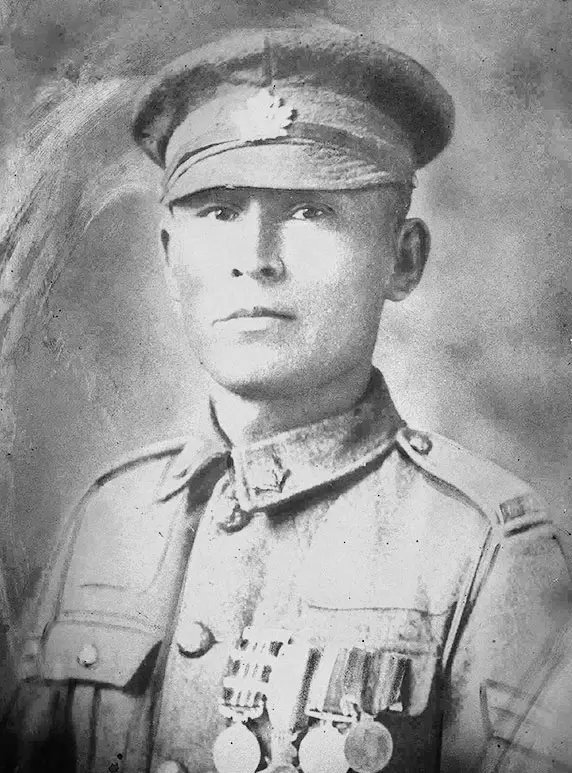
Unlike the previous hero, the life of Francis Pegahmagabow, the Canadian First Nations has developed much better.
In 1914, he volunteered for the Canadian Expeditionary Force and, despite discrimination, became a full member of the 23rd Canadian Regiment (Northern Pioneers). Francis was proud of his roots and origin, emphasizing it in every possible way and decorating his tent with national symbols, which in those days was a real feat and a challenge to the unjust policy of oppression.
Francis Pegahmagabow was a man of tremendous will, and fate did not spare him, throwing severe challenges. The description of his exploits and military path deserves a book. For example, his way as a sniper began with the Second Battle of Ypres when German troops used to combat gas for the first time on the Western Front. He took part in the most brutal battles and received injuries and awards. The fame of a scout and a shooter terrified the enemy and caused incredible admiration both from his colleagues and among the command. According to official information, this remarkable man captured 300 people and destroyed 378 enemies, using not the best Ross rifle. Due to his wounds, he went through the war to the very end and returned to Canada in 1919.
Pegahmagabow has become a significant part of the positive change in Canadian politics and public life at home, becoming an essential figure in his country. The incredible life of Francis Pegahmagabow formed the basis of many books, including fiction. Monuments were erected in his honor, songs were dedicated to him, and awards were established. And how much Francis has done to develop indigenous peoples cannot be estimated.
This Canadian sniper has become one of the symbols of WWI. During his short military service, he achieved more than many of his colleagues in a lifetime. Henry was born in 1881 in Alberta. Growing up, he helped his parents on the ranch, and after reaching the age of 20, he began to participate in the rodeo. In parallel with this occupation, he served in the mounted police and did not stand out from other residents. The turning point in Norwest's life came in 1915. Then, he became a member of the CEF, which gradually became Canada's main field force during WWI.
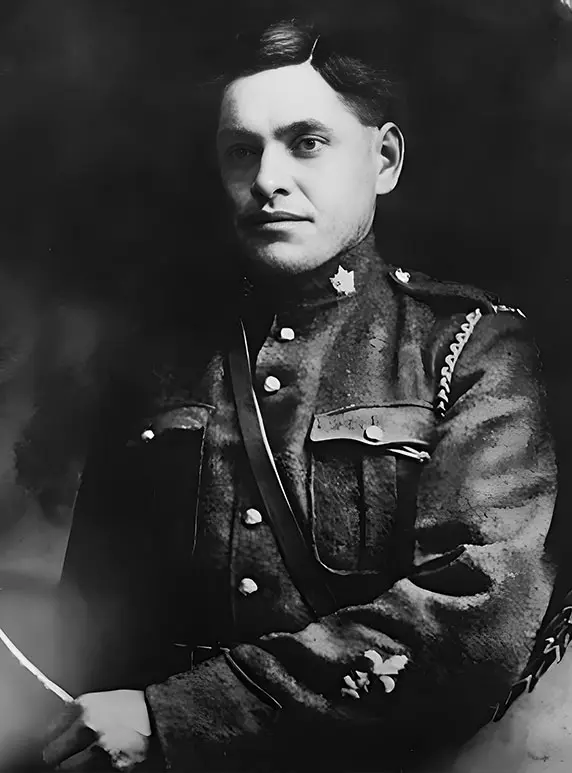
In a little less than three years, Henry served in the 50th Infantry Battalion, for which he managed to get the rank of lance corporal. During the same period, he set his sniper record of 115 officially confirmed kills of enemy soldiers. In reality, this figure was several times higher since, at that time, only murders noticed by the soldiers of his unit were classified as official. Norwest achieved such a record thanks to a combination of many factors. He was disciplined, accurate, and had much experience in hunting different animals. In addition, Henry had a unique gift for the stealth movement. He was so skillfully disguised and made no sounds while moving that even most of his colleagues often lost sight of him. Thanks to this skill, Norwest found the best places to shoot and perfectly coped with the reconnaissance role.
Henry Norwest participated in two famous battles at Amiens and Vimy Ridge during the war. It was for the latter that he received his only medal. She was awarded the Hero in 1917 for a considerable contribution to the occupation of a strategically important milestone. Death overtook Norwest shortly before the end of WWI. In August 1918, he was killed by a German sniper during one of his reconnaissance missions. Despite such a short military career and a small number of awards, the Canadian has become a true legend. His sniper rifle is still kept in one of the museums in Calgary, and many modern Canadian snipers call him a role model.
This initially simple hunter, who never intended to shoot people, became one of the best WWI snipers who fought on the side of the British forces. He received such a high status from his colleagues in the Newfoundland Regiment, who actively participated in the hostilities.
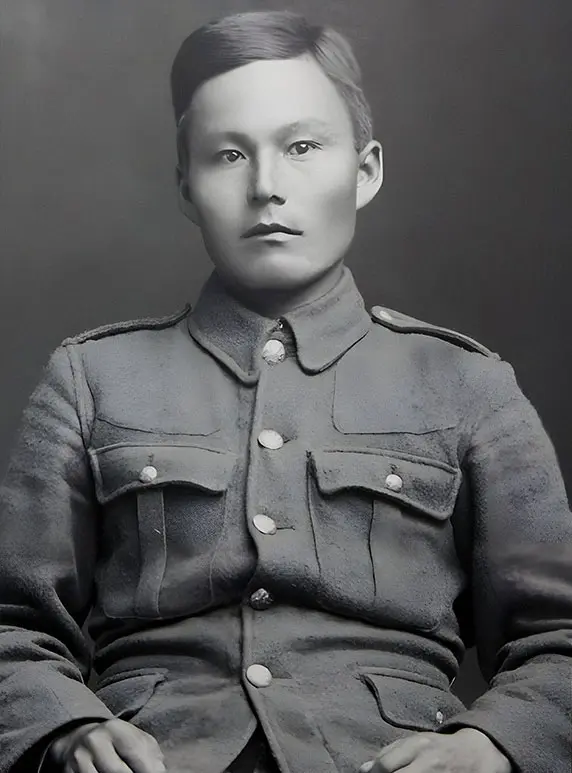
John Shiwak was born in 1889 (the exact date of his birth has yet to be preserved) in the small community of Rigolet, near the famous Lake Melville. His parents were native Inuit, who slightly corrected their real name, Sikoak and became Shiwak. John's father was an avid hunter, so he taught his son this occupation. At this time, the future sniper first picked up a rifle. After reaching 22, Shiwak became a member of the Frontier Legion. It was this British organization that, in 1911, was the initiator of the deployment of military operations in Newfoundland. After four years, John left his native place and moved to St. John's, where he became a full-fledged representative of the famous Newfoundland regiment.
In the following years, Shiwak participated in several battles, showing his skills as a marksman. For this, he was promoted to lance corporal in 1917. The exact number of enemies killed by John Shiwak has not been preserved in history. However, his colleagues claimed that the number of victims of this sniper was at least 200 people. Shiwak died in November 1917 from a shell explosion, and on the same day, his body was interred. Such a loss became irreparable for the Newfoundland Regiment. His colleagues considered John their idol and called him an even, reliable, pleasant person. Many years later, one of the premises of the University of Newfoundland was named after him, and a memorial plaque was opened at the burial site.
This German, who lived only 25 years, became one of the best snipers of WWI. During his short service, he received many awards and became one of the symbols of the sniper business of that time.
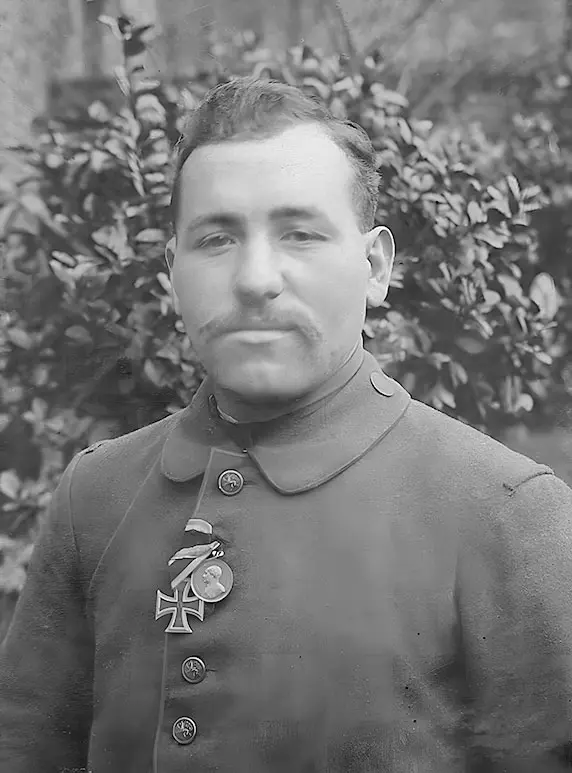
Georg Herrnreiter was born in 1891 in Reisbach. He was an ordinary child who did not differ in mental or any other abilities. After coming of age, Georg became a digger. Far from always, he was a law-abiding citizen, so he was even prosecuted for poaching. Herrnreiter found his calling in 1914. He was drafted to the Western Front and included in the second rifle regiment. Here, he honed his sniper skills and quickly stood out from his colleagues. In addition to his direct duties, Georg also performed the tasks of a scout. Such versatility, agility, composure, and fearlessness made him an indispensable regiment soldier. During the war years, Herrnreiter was repeatedly wounded. Despite this, he was able to fire 121 officially confirmed fatal shots. For this and other achievements, the sniper was awarded the prestigious Bavarian medal, more critical than a soldier of his rank could not receive. If Georg had a more or less ordinary education, he would undoubtedly become a corporal and move further up the career ladder.
For all the time, Georg Herrnreiter officially took part in 8 known battles, and he could go through the same number of fights without being mentioned in any sources. For the qualities shown, the famous sniper and intelligence officer was awarded four status awards, which he was awarded in the period from 1914 to 1916. Herrnreiter died at the end of January 1916 in the forests of the French commune of Vimy. The exact cause of his death is not indicated, but it can be said that he spent the last minutes of his life in battles with opponents.
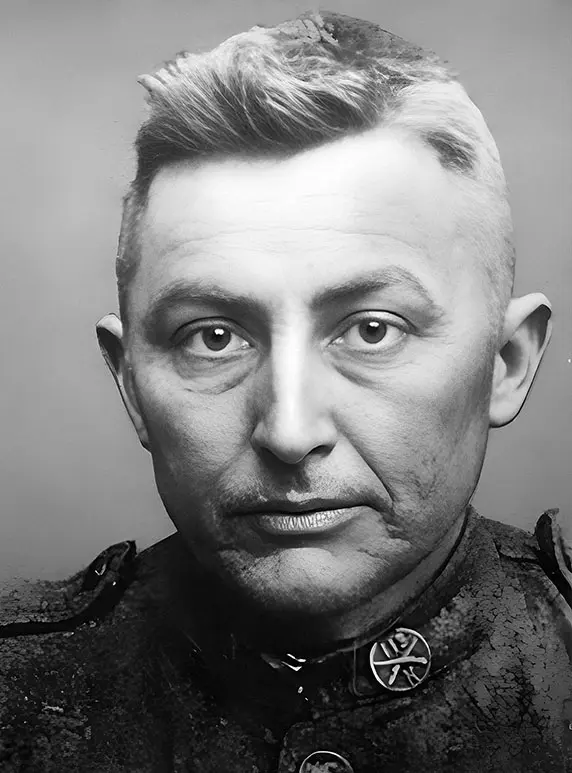
This sniper from the United States was rightfully awarded the title of one of the heroes of WWI. He performed his duties flawlessly and deserved many good words from his colleagues. Its history began in the small town of Manila, located in Arkansas. It was here that, in March 1918, at the age of 30, he was drafted into the army. After that, he was immediately sent to an infantry company, where he served until the war's end. From the first days, Davis proved to be a good sniper. His innate composure, endurance, and ability to concentrate on trifles helped him achieve many military goals. Davis' skills to hit small targets, which he honed as a child while hunting small game, also contributed to this. A few months after the call, Herman surprised everyone when he could shoot 4 German soldiers (machine gunners) from a simple and outdated Springfield with open sight. Thanks to this achievement, his platoon could break out of the potential encirclement and continue to carry out the assigned combat missions.
The second fantastic action of Herman Davis was the killing of 5 enemy soldiers located at a distance of more than 1000 yards. At that time, this was considered impossible even for the best snipers in America. All the warnings of his colleagues did not affect Davis, and he continued with his assignment. As a result, all targets were hit, and the foot soldiers who saw this retold this story as the most incredible legend. Herman Davis's achievements did not go unnoticed by representatives of the top military leadership. So General Pershing included him in the top four heroes of WWI, which is the best assessment of the influence of a sniper on the course of hostilities.
Despite a short military career, Herman Davis earned many awards. For WWI, he received three status medals and several government awards. After the end of the war, the famous sniper was part of the American army for only one year. In 1919, he retired and returned to his homeland. However, after four years, he died from complications after an operation for tuberculosis. Today, only some people remember his achievements. Nevertheless, much is associated with the sniper's name in his hometown of Manila. So, a local park and one of the streets were named in his honor. In addition, a monument has been erected in the city's most picturesque place, reminding new generations of Herman Davis's exploits.
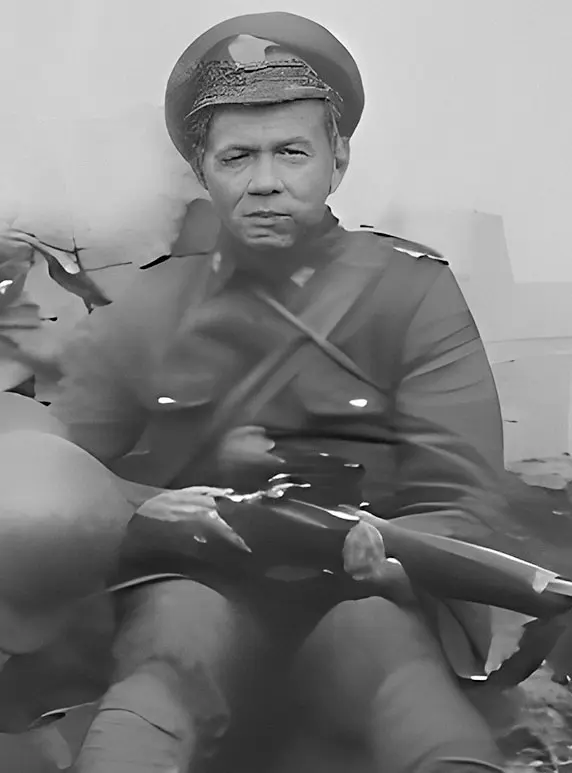
There were many good shooters in the WWI days, but few of them could match the achievements of Johnson Paudash. This Canadian was born in 1875 in Hiawatha (Ontario). As a child, he had little interest in weapons, preferring peaceful hobbies. Having received a pretty good education, he took up legal activities and achieved good results. However, in 1914, his life changed dramatically. In September, he was called up for war, and in November, he joined the Canadian Expeditionary Force infantry battalion. These events occurred in Kingston, the same province as Paudash's native Hiawatha. With him, his brother George, who was only 24 years old then, was called up for service.
In May of the following year, the battalion Johnson Paudash served in was sent to the UK and, a month later, to France. At this time, he had already managed to prove himself, for which he received the rank of junior corporal. The further military fate of Paudash is still vague. There is no exact number of enemies shot by him in official sources. At the same time, he claims that their number was several hundred people. Johnson's colleagues partially confirmed these words. In September 1915, a Canadian sniper was shot in the leg. After returning to service, he joined the ranks of his native unit, performing combat missions near the famous Belgian city of Ypres. It was here that Paudash became a real hero and showed everyone his talent as a sniper. For this work, he received his first award, which he was proud of until the end of his life.
After the end of the war, Johnson Paudash returned to civilian life and took up a high-profile post in the federal government. He dealt with the division of land and was directly involved in determining the boundaries prescribed in the 1923 treaty. Paudash died at the age of 84. He is buried in Lindsey, his native province of Ontario.
American sniper Herbert W. McBride was a versatile personality. From a very early age, he was interested in biology, anthropology, geology and other sciences. However, his greatest delight was hunting. Already at the age of 10, he independently shot a large deer and, in the future, demonstrated outstanding results in various shooting competitions. McBride entered military service in 1907 at the age of 34. Almost immediately, he began to be used as a sniper. Herbert coped well with his tasks and increased his status in the army. His ability to shoot accurately from long range came in handy during WWI. He became a genuinely legendary sniper and helped win several essential battles there.
During one of the military operations, McBride was again wounded and remained disabled. Until the end of WWI, he did not leave the army but continued to serve as an instructor. For his work, the deadly sniper received many awards and the status of a legendary personality. After the war, he wrote memoirs, one of the best books of that time. Herbert W. McBride died in 1933 when he was 59 years old.
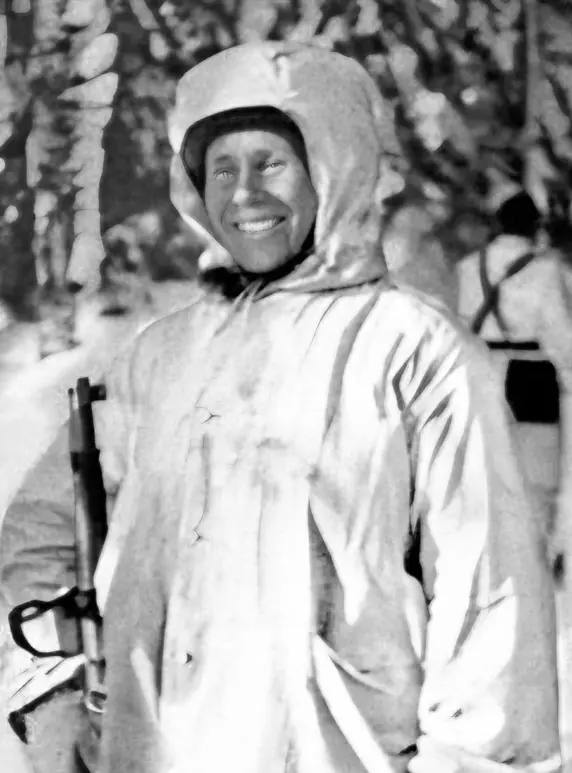
If you try to find an interpretation of the word "Legend" in a dictionary snip, there will be a photo of Simo Häyhä on the corresponding page. His name is difficult for an English-speaking person to pronounce, so he can be called "White Death." This name has become a household name, and the unsurpassed Finn himself has become a guide for every shooter for many decades.
The famous Finnish sniper was born into a farming family in South Karelia; Simo has been hunting with his father since childhood. I admire his firmness and relentless pursuit of excellence throughout his life and professional career. These skills benefitted him when, at the age of 17, he was drafted into the army. During the service, his talent for weapons was revealed to the fullest.
But it wouldn't be worth anything if it weren't for the character of Simo Häyhä. His diligence and determination allowed him not to give up shooting after the end of his military service and to continue to improve his outstanding skills. Therefore, when Russian communists attacked the country in collaboration with Nazi Germany and Finland was forced to carry out total mobilization. White Death was already a professional shooter who brought his skills in using the Finnish modification of the Mosin rifle to perfection.
His short stature at 5 ft 3 in and ability weren't his only advantages. Simo fired from a Mosin M28 rifle with an open sight without using a weapon optic. This significantly broke all the invaders' counter-sniper measures. Finn's ability to disguise himself, combined with his small stature, turned him into a real deadly ghost, instilling primitive horror in the frozen soldiers of the infamous Red Army. The latter vilely invaded the territory of an independent state.
All this led to the fact that on account of one of the best snipers in the history of humanity during his activity, there were 542 Red Army soldiers. If you're impressed, don't rush because that's not all. Adding to this number of invaders killed with a rifle, those whom Simo Häyhä destroyed with a Finnish Suomi M / 31 machine gun, his account will reach 705 enemies. If we continue to speak in the language of numbers, then the national hero destroyed five invaders per day. Also, it is interesting that Simo uniquely congratulated the tyrant Stalin on his birthday, setting a personal productivity record that day - 25 killed communist soldiers.
Simo Häyhä has become his brave nation's natural, authentic, and legendary hero. A simple, honest son of his homeland who used an ordinary sheet as camouflage entered the pantheon of national heroes and his name is honored to this day.
The entire Red Army caught the White Death with particular groups and artillery. Everything was to no avail. Nevertheless, on March 6, 1940, an enemy sniper's bullet found him. The fighters who saved their sniper recalled that he looked terrible: a shot that hit the jaw of a bullet turned half of his face. But Simo Häyhä survived and came to his senses on March 13, the war ended. He was also rewarded an honorary Rifle Sako M/28. The day his country defeated a vile, outnumbered enemy. And his contribution to this victory was enormous.
He lived a long and happy life, dying in 2002. He bred dogs, hunted, and remained a national hero until his death. What remains after death?
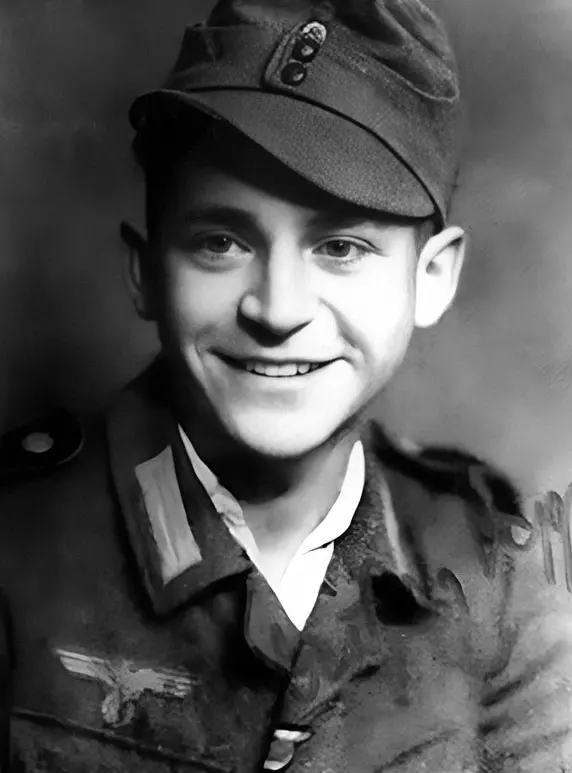
Many heroes were from different sides in the incredible nightmare of World War II. History judged us, but it did not erase the people on the side of evil. Sepp Allerberger is the clearest example of an unexpected hero who became one against his will, trying to survive and escape. At the same time, using this person's example, one can trace how war breaks destinies and makes people live a life that does not appeal to them.
Josef, the Wehrmacht's second-best sniper, was born in Austrian Styria into a rural family of an ordinary carpenter. He could not even imagine that life would force him to take up arms, and from childhood, he studied family business with his father. In the winter of 1943, the guy was drafted into the German army, which annexed his native Austria. Like many people from the mountainous regions, he was assigned to a mountain division, where he mastered the profession of a machine gunner. After completing a six-month course, the Austrian ended up in the Donbas region of communist-occupied Ukraine, where there were bloody battles. It was there that he encountered the terrible, relentless face of war.
According to the memoirs of Allerberger himself, he experienced five days that turned his whole life upside down, and he realized how much he did not want to die. This was impossible for a machine gunner since everyone was hunting for such fighters, from enemy snipers to artillery. At that time, he clearly understood that it was necessary to change military specialization. Otherwise, he would not live to see the end of this nightmare. Having received a slight wound in the arm, Sepp was able to change his specialty.
After completing a crash course in sniper training, Josef began to fulfill his functions on the battlefield. Starting as a carpenter and a weapon parts repairer, he soon became a natural shooter. Moreover, it is known that he used the Soviet Mosin-Nagant rifle for the first nine months. Even with this problematic weapon, he showed incredible results, which looked fantastic even against the backdrop of a strange system for counting targets destroyed. For this, he was sent to shooters' courses in Germany.
After completing the course, Allerberger returned to the front and began using a Mauser 98k sniper modification with a 4x optical sight and expansive bullets and a Gewehr 43 semi-automatic rifle. This further improved his results, bringing him fame. Propaganda made him a recognizable and famous face. Therefore, after the defeat of Germany, Allerberger realized that if he were captured by the fighters of the communist army, known for their bestial cruelty, knowing how many Russians he had killed, his end would be terrible. Therefore, he wandered for two weeks in the alpine forests to enter the zone of occupation by civilized allies.
He lived until 2010, working as a carpenter. His memoirs have become a vivid testimony to the horrors of war and, at the same time, an excellent textbook for snipers. On his account, there were 257 killed opponents.
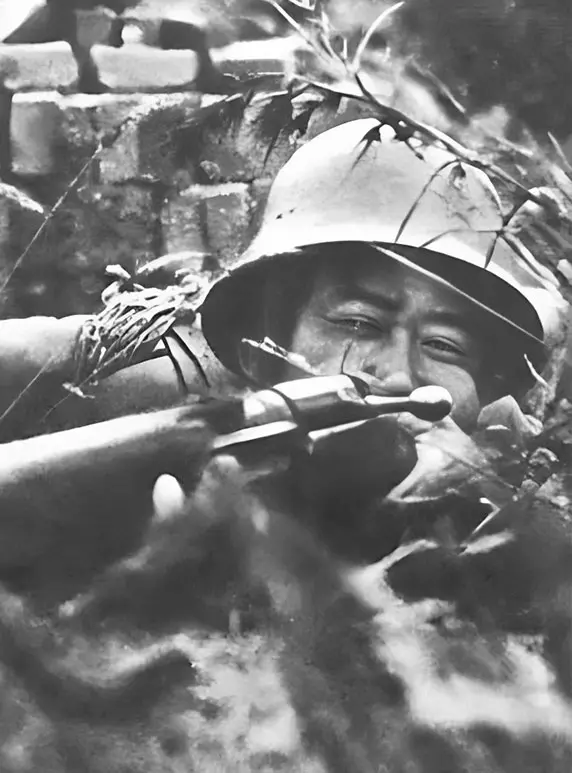
A fierce war was going on not only on the European continent. In terms of cruelty and bloodshed, the Second Sino-Japanese War was not inferior to the clashes in Europe and Africa. This war also had its heroes and legends. One of these was the Chinese Sergeant Tung Chih Yeh, who killed over 100 soldiers of the Imperial Japanese Army. Moreover, he did this using the Type Chiang Kai-shek rifle with and without an optical sight.
Together with our previous hero, the leader in the number of kills among Wehrmacht snipers, Matthäus Hetzenauer, also served. He had 345 confirmed kills to his credit.

The life of this native of the Austrian Tyrol was much more tragic than his countryman and colleague. Unlike Josef 'Sepp' Allerberger, he was captured by Soviet troops and spent five years in communist camps. After returning home, he suffered all his life from the consequences of military wounds and died in 2002.
The sniper's work is dirty and cruel; this is the wrong side of the profession. But, as cynical as it sounds, goals have different values. It is one thing to kill an ordinary soldier and quite another to eliminate a senior officer or an enemy sniper. The price of victory is too different, especially if the hunt is for a dangerous, cunning hunter like you.
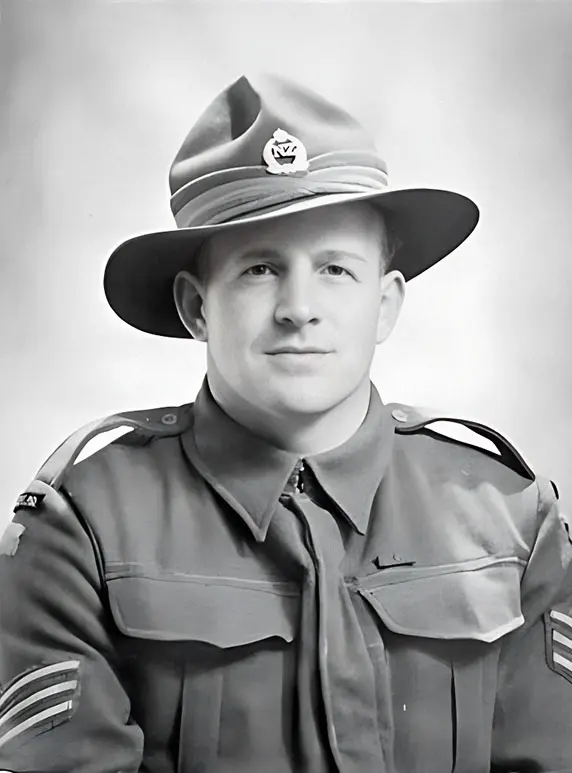
The New Zealand shooter Clive Hulme, who destroyed 33 German snipers during the Battle of Crete, can tell the most about such confrontations. This achievement allowed him to enter the pantheon of legendary specialists.
His military path is like an incredible cinematic action movie. After the forced evacuation, he oversaw the punished soldiers of the disciplinary battalion. When German troops landed on the island, Clive took over the functions of defense commander, distributed weapons to the convicts, and went to destroy the enemy. He personally single-handedly tracked down and destroyed snipers. He took away weapons and camouflage from one of them, which allowed him to mislead the enemy and increase productivity. The sniper rifle was not the only weapon. Strictly speaking, Clive Hulme was a weapon himself. He destroyed the Germans with bayonets, threw grenades at their positions, and killed them with ordinary small arms. He avenged his brother, who was killed on the same island. He inspired and inspired faith in his soldiers. Rambo is just a dull bully compared to this superhuman. You can believe it.
Despite many wounds, this hero was eager to fight and achieve a service return. He had already served in the rear because the war greatly spoiled his health.
The wounds made themselves felt all his life until he died in 1982. But this did not prevent him from diving and leading an active lifestyle. He achieved fame and recognition in motorsport, winning numerous races and becoming the Formula One World Champion in 1967. He has something to be proud of as a soldier, husband and father. His son was as brave as his father.
This Austrian sniper was one of the best in Nazi Germany. He possessed all the personal qualities necessary for accurate shooting and skillfully developed them. This allowed him to become famous nationwide and receive many valuable awards.
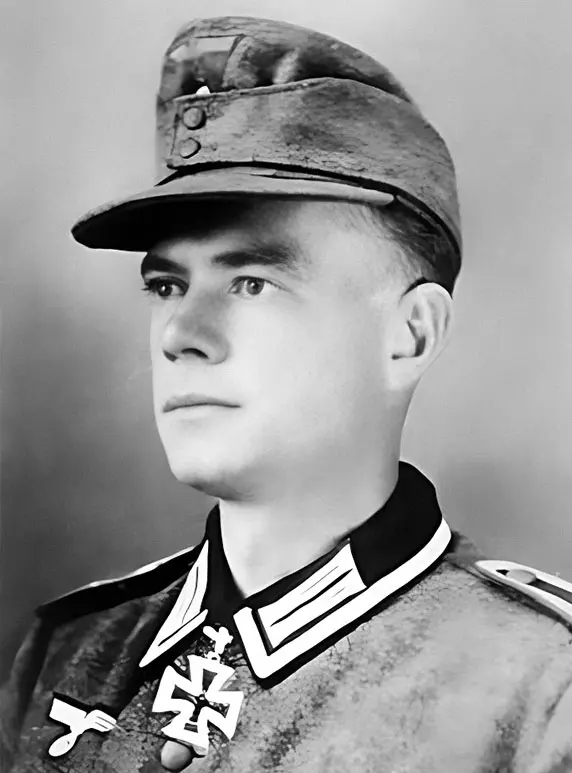
Friedrich Pein was born in October 1915. From childhood, his parents taught their son to be independent, so they often took him hunting with them. Friedrich "met" with different types of weapons, which he later used in his sniper activities. At the age of 23, Pein became a Wehrmacht soldier. From the first days of his service, he served as a sniper in the Jaeger regiment of the mountain rifle division, responsible for the fighting on the Eastern Front. He showed his qualities as an ideal shooter almost daily. Between the beginning of WWII and the end of 1943, he shot more than 200 people. These figures are considered official, but in reality, they are much higher. In the first months of 1944, Friedrich Pein joined the ranks of the infantry division, where he remained until the complete defeat of the German army.
Friedrich Pein managed to become a hero for the Nazis. Toward the war's end, he was awarded the prestigious Knight's Cross of the Iron Cross. Only another well-known Nazi sniper, Matthaus Hetzenauer, had previously received such an honor. After the surrender of Germany, Pein ceased his sniper activities. Despite the murders he committed, he remained virtually unpunished. Friedrich Pein died only in 1975 at the age of 59.
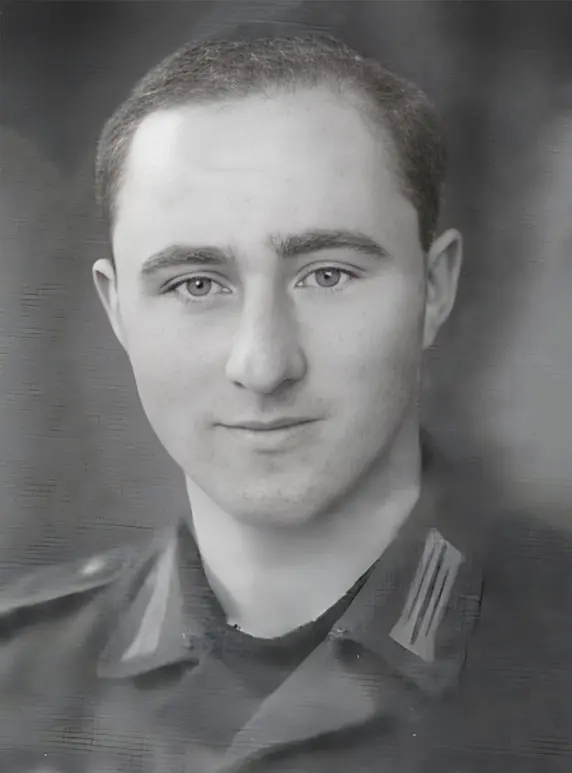
Another famous sniper of the Nazi army was Bruno Sutkus. This German has 209 officially registered kills, one of the best indicators of WWII. Bruno Sutkus was born in May 1924 in a small town near Konigsberg. His father was a Lithuanian by origin; therefore, it was necessary to go through a lengthy procedure to obtain German citizenship. This did not happen, so until 1941, Sutkus had no citizenship. However, from the moment he joined the German army, he managed to acquire the status of a naturalized German. Shortly before this, Bruno entered the assault division and began honing his sniper skills. A few months later, he began formal training at the sniper school (located in Vilnius), which lasted until the end of 1943. After its completion, he was assigned to an infantry division. Here, he put into practice the acquired knowledge and achieved recognition in Germany. Despite his caution, Bruno was seriously wounded at the front. At the time of rehabilitation, he became an instructor in sniper art.
After the defeat of Germany, Sutkus joined the local anti-Soviet resistance, for which the KGB caught him. Torture, deportation to complex regions, and daily forced labor did not break him. Ultimately, he waited for the moment when the leader of West Germany agreed with the Soviet government on an amnesty for some Germans, including Bruno Sutkus. For many years after that, he worked at the most challenging jobs until 1971, when he managed to leave for Vilnius. After the fall of the communist regime and the independence of Lithuania, Sutkus became an adviser to the Lithuanian army and lectured. In 1994, he left for Germany, where he died at 79.
The list of the world's top snipers includes Lyudmila Pavlichenko. Over the years of WWII, she killed several hundred people and received the status of the best female sniper. Pavlichenko was born in the territory of modern Ukraine in 1916. She lived in Kyiv and worked at one of the weapons factories for a long time. Constantly being near weapons developed her interest in shooting. However, before WWII, it was only a hobby, not a profession.
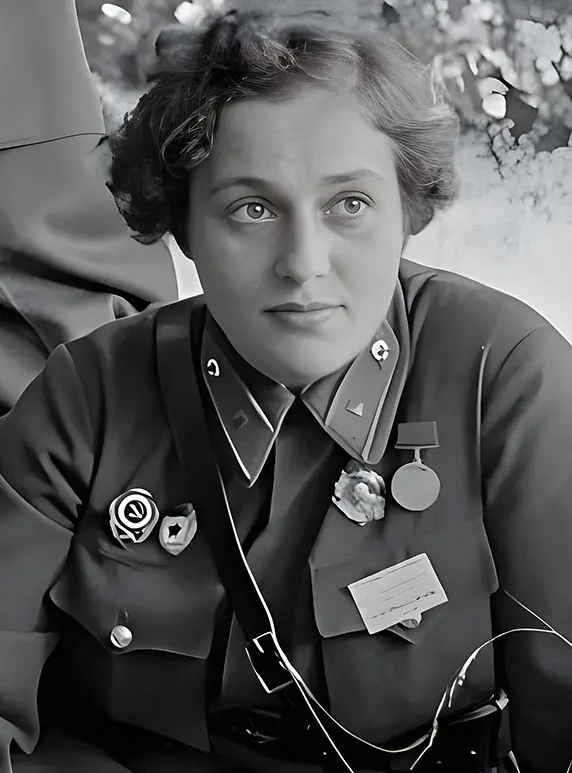
Pavlichenko entered the war as one of the volunteers. She immediately joined the ranks of snipers, where she could develop her skills. In 1942, Lyudmila made her first successful sniper shot. Over the next three months, she killed 187 enemy soldiers and became one of the most famous snipers in the USSR. However, a severe wound received in June 1942 forced Pavlichenko to end his sniper activities. After the end of the war, official sources began to publish information that Lyudmila killed 309 enemies. It is unknown where this figure came from since no evidence has been provided. After WWII, Pavlichenko became a historian and died in 1974.
The famous military sniper Vasily Zaytsev became famous during WWII. According to the data that existed at that time, he killed 242 enemy soldiers, but it is difficult to say whether this is true or not today. The future soviet soldier was born in 1915. He learned the ability to shoot from his grandfather but did not intend to connect his life with the army. After the start of the war, Zaytsev expressed a desire to help cope with the enemy, so he enlisted in a rifle regiment. There, he was able to develop the skills necessary for sniper work.
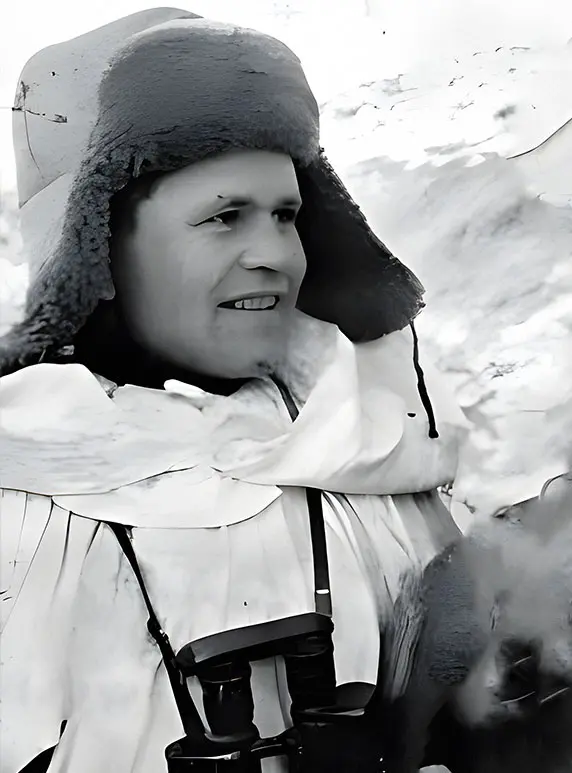
Zaytsev became a sniper in 1942. Before this, he could kill 32 enemies with a regular iron sight, which was already a good result. As soon as Zaytsev was entrusted with a sniper rifle, he immediately proved his skills to everyone. During the period from 1942 to 1943, he eliminated 210 enemy soldiers, for which he received many awards and became one of the deadliest snipers in history. After the end of the war, Vasily Zaytsev worked as an engineer in Kyiv. He died in 1991.
The Second World War brought many heroes to the sniper business. We did not mention all of them. In particular, we did not mention the snipers of the Red Army. We have no doubt that in the country's army, which at first was an ally of Nazi Germany, and then filled with the corpses of its soldiers, there were heroes and high-class snipers. But, knowing how the communists felt about statistics and manipulation, we decided not to include Soviet snipers in our list so, as the USSR saw lies as its primary goal, including creating imaginary heroes.
After World War II, humanity did not learn its lesson. In a couple of years, the Korean War begins, in which the USSR will once again show its ugly face, and Marshal Zhukov will finally convince the world of his failure as a commander and commander.
This war was one of the most famous military episodes in history. His hero was World War II veteran Ian Robertson, who managed to destroy 30 enemies one morning. This is a fantastic achievement because not every shooter has achieved such a result in their entire career, even after going through the war.
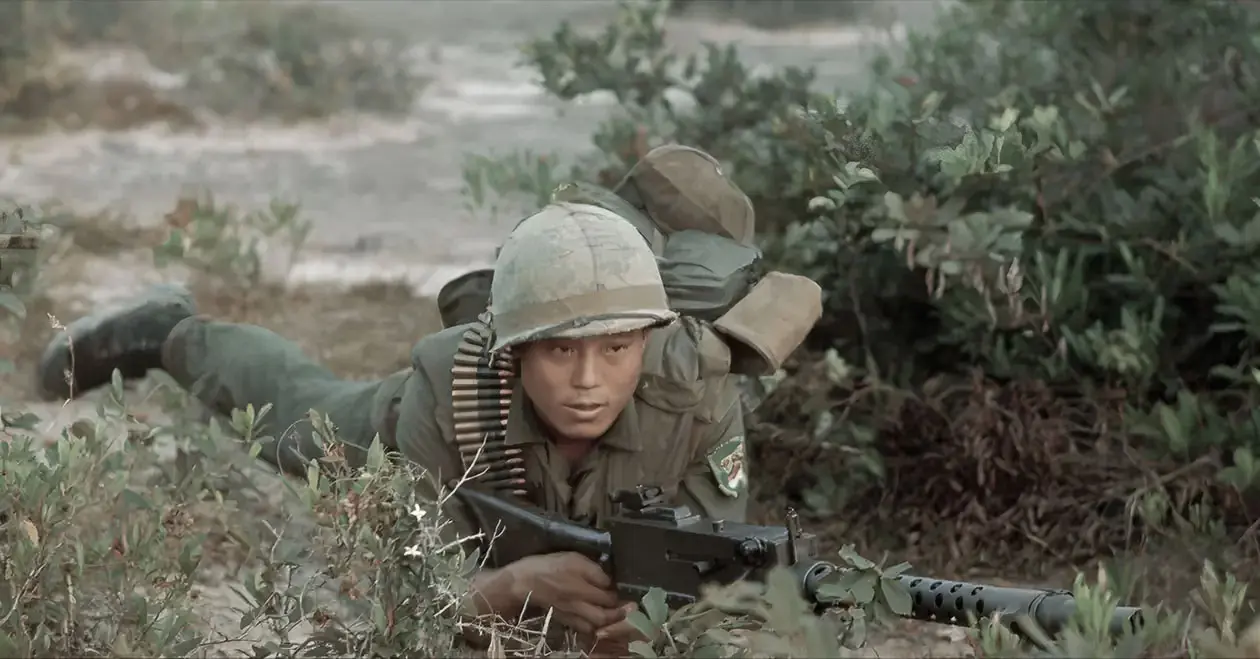
The inglorious Vietnam War, despite its tragedy, gave the United States many legendary heroes. One of which is Gunnery Sergeant Carlos Hathcock. It's hard to believe, but since childhood, the man has won shooting competitions and was a born sniper. He began his journey in Vietnam with the military police. Only then did he retrain as a sniper. And what a sniper! Officially, on account of his 93 confirmed murders, although Hathcock himself called the figure in 200-300 people. And, in this case, his words do not look like boasting. Indirect proof of his effectiveness is the incredible $30,000 bounty placed on his head by the Vietnamese. The Viet Cong offered between $8 and $2,000 for snipers.
This brave man brought absolute terror to the enemies. With a telescopic sight .50 caliber M2 Browning heavy machine gun, he set the record for a 2,500-yard effective shot. This record lasted 35 years—however, more on that below. Carlos Hathcock himself had such an exciting business trip in Vietnam that it is simply impossible to believe that this happened to one person in a single lifetime and that it happened. His biography is so dizzying that we will not deprive ourselves of the pleasure of studying it carefully in our separate article about this legendary man.
Against the background of such a crazy military career, against the backdrop of Hathcock, other heroes of Vietnam are lost. For example, Chuck Mawhinney had 103 confirmed and 216 unconfirmed kills. Or Adelbert F. Waldron III, who killed 109 enemy soldiers.
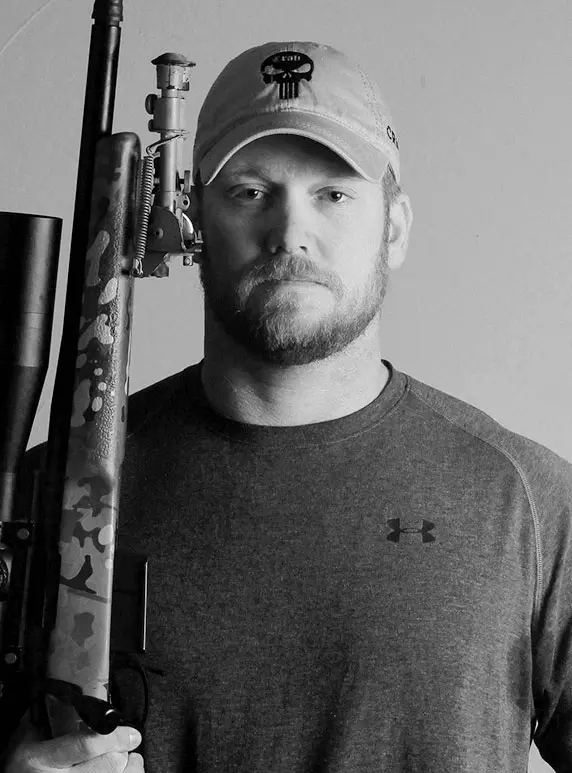
Among the top snipers in the world, it is necessary to highlight Chris Kyle. He was born in 1974 in Texas, and at 8, he fired his first shot from a rifle given by his father. Chris liked this activity so much that he wanted to learn how to shoot more accurately. At the age of 20, he decided to enlist in the military. Due to previous injuries, he was not immediately accepted into the army. However, in 1999, he still achieved his goal. At the beginning of the new century, Kyle began training in sniper courses and was able to master this profession perfectly.
Kyle's military activities began in Iraq. It was there that he first shot and killed a terrorist who was trying to blow up US Army soldiers. Over the following months, he brought the number of dead people to one and a half hundred people and became one of the most productive American snipers in history. Kyle received numerous awards for his service and retired in 2009. After that, he trained snipers, and in 2012, he released his autobiography. Based on it, “Sniper” was made in 2014. Clint Eastwood directed it, and the central role went to Bradley Cooper.
One of the best snipers in the world, relatively recently completed their military service, is named Abu Tahsin al-Salhi. He was born in 1953 in Iraq into a Shiite Muslim family. Until 1970, Abu traveled the world in search of work. He used a French-made rifle for self-defense and hunting, thanks to which he learned to shoot accurately.
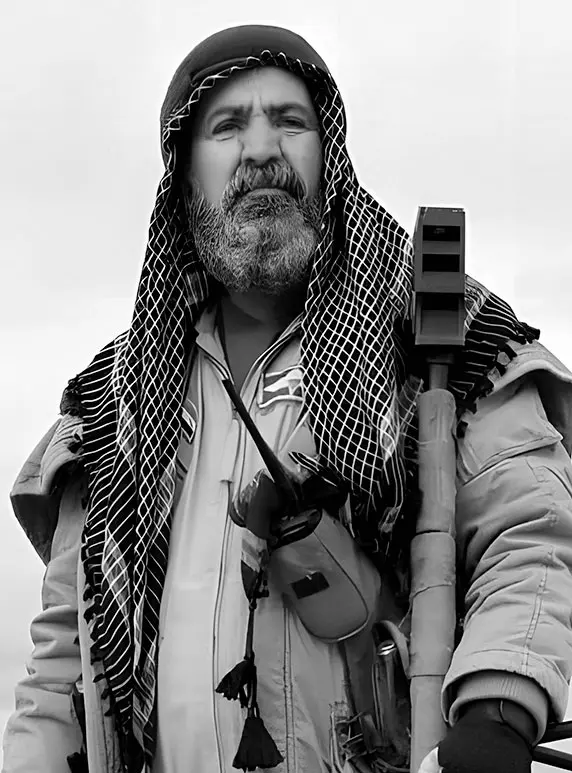
Abu Tahsin al-Salhi's first test as a sniper was the so-called Yom Kippur War (1973). There, he established himself well and killed several important enemy commanders. He then participated in the Second Kurdish-Iranian War (1974) and the Iraq War (2013). During this time, one of the best snipers in history, according to official data, shot 384 enemies. In 2017, al-Salhi was killed in a battle near Hawija (Iraq). He was awarded a high title and a monument in Nasiriyah for his achievements.
One of the most successful snipers born in Asia served in the Sri Lankan army for a long time. He was somewhat secretive, so no exact information about his childhood existed. Moreover, his military career is well known today. It started in 1991. At this time, Madalana was a simple infantryman who served in the Battalion of the Gajaba. In 2000, he completed sniper courses and began to apply the acquired knowledge in practice. Over the next nine years of service, he officially killed 217 enemy soldiers, but in reality, this figure was much higher. For his perfect accuracy, he received the status of lethal sniper, whom all enemies feared.
In 2009, during the Sri Lankan Civil War, Madalana was killed by a sniper. By then, he had served for almost two decades and became one of the symbols of the local army. He could successfully eliminate enemies during daylight hours and at night, for which he was awarded many status awards.
Modern times have brought us an endless series of conflicts in Iraq and Afghanistan. Here, the technologies of the modern army and new paradigms of war developed. Since 2002, a long process of getting more and more new records for the target destruction range began. Both technological progress and the general systematization and unification of military paradigms facilitated this. The development of weapon optics should also not be underestimated. Thanks to the combination of these factors, the army received such excellent results that it was impossible to think about at the time when Carlos Hathcock wrote his name into history.
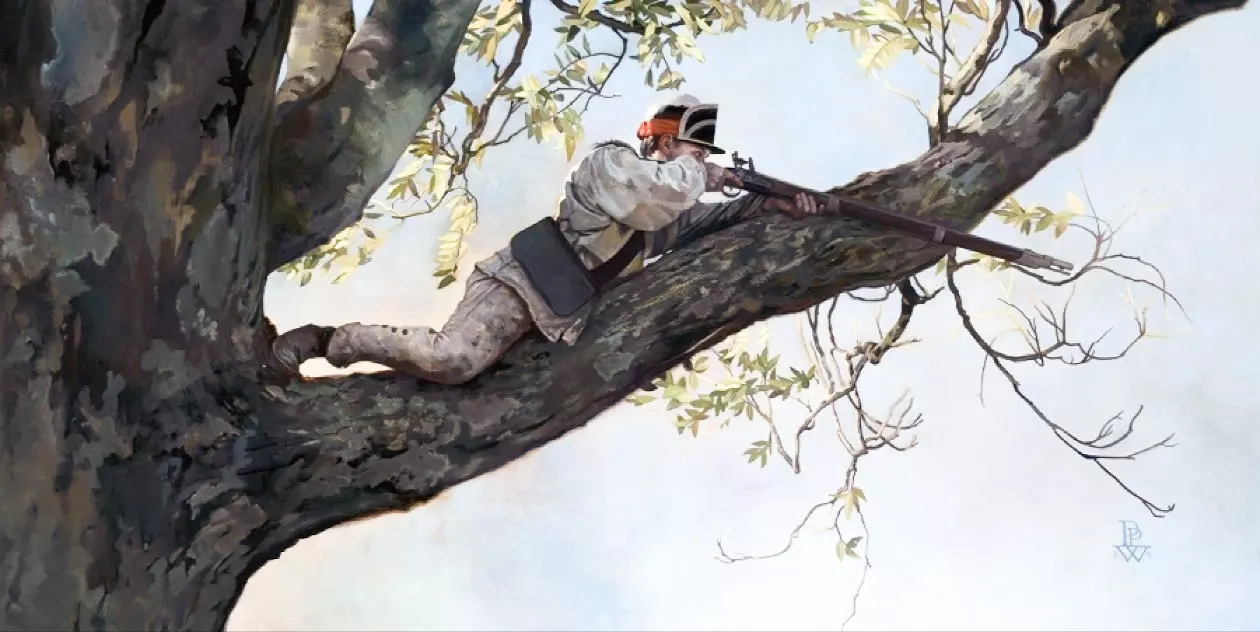
The Hathcock name fell in 2002 when Canadian Master Corporal Arron Perry, formerly of the PPCLI, did the impossible and killed a target 2,526 yd away using a .50 caliber (12.7 mm) McMillan TAC-50 rifle. Using the same weapon, a booming shot was made at 2,657 yards in the same year. Its author was also a Canadian, Corporal Rob Furlong.
This record lasted a little longer until 2009 when the British Craig Harrison of the Household Cavalry destroyed a machine gun crew of two Taliban with two shots after firing nine sighting shots. With the third shot, he disabled the machine gun. He used an L115A3 Long Range Rifle rifle chambered in .338 Lapua Magnum. The bullet traveled 2,707 yds and had an elevation of 140 yards.
But the story didn't end there either. In 2017, a shot was fired from a high-rise building in an Iraqi city, killing an ISIS terrorist 3,871 yd away. This shot is considered to be the farthest recorded so far. It was produced by the officially unnamed Canadian Army Joint Task Force 2 sniper using a McMillan Tac-50 sniper rifle. But, we will reveal a little secret: the sniper's call sign is Wali, and today, he returned to the war as a volunteer. But now, he is helping Ukraine fight other terrorists and Nazis - Russia, which has invaded the territory of a free independent European country. Therefore, there is a possibility that he will use his incredible experience to update his record. In 2023, Ukrainian military sniper Vyacheslav Kovalsky updated his record achievement. He was able to eliminate a Russian soldier from 3.8 kilometers (4,156 yards) away.
As we have already said, the change in warfare algorithm did not affect the need for troops and snipers. Arrows were in demand in all modern wars. They destroyed terrorists and continue to do so today. Today, it is neither the East nor Africa. Today, it is the heart of Europe, where the terrorist country Russia has provided many excellent targets for Ukrainian Armed Forces professionals and battalions of foreign volunteers. Many of them have invaluable military experience in Iraq and Afghanistan. And many of them are not inferior to the worthy shooters below.
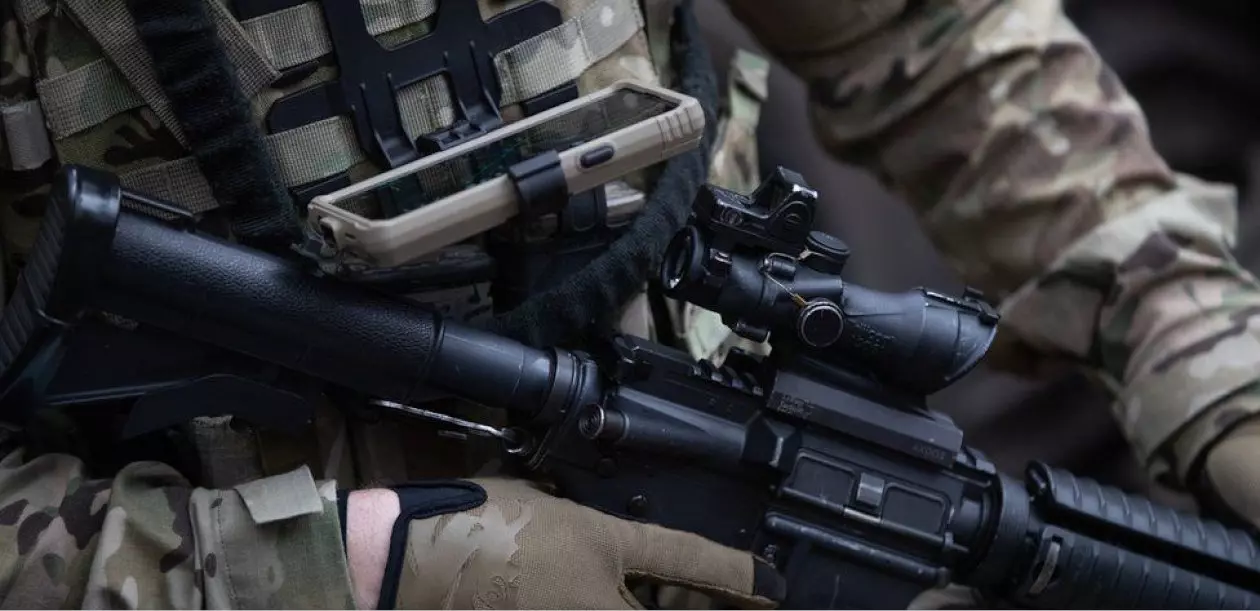
First on our list of heroes is the legendary man who was made into the fantastic film U.S. Navy Chief Chris Kyle of SEAL Team Three. The most productive sniper in the history of the US Army. On his account - 255 enemy soldiers. The Pentagon confirmed 160. In addition to incredible statistics, Chris Kyle had an excellent combat biography. What was the Second Battle of Fallujah, where he eliminated 40 enemy fighters? Devil of Rahmadi - that's what the terrorists called him, and put up a $20,000 reward. This man is worthy of every one of his awards, and we strongly advise you to watch a film about his life.
Surely, someday, they will make a film about the U.S. Army Staff Sergeant Timothy L. Kellner. This warrior has everything ahead of him, as he is active today, and his list already consists of 78 eliminated targets in Iraq and Haiti.
The sniper is a monolithic alloy of virtues that every soldier does not possess. High intelligence, physical data, psychological stability, analytical skills, and the ability to predict and improvise. This is an incomplete list of ingredients each of today's heroes possesses. There is no doubt that snipers will remain on the battlefield, even if drones and robots fight the entire war. Even if they don't have to shoot, it's just that such multifaceted, flexible, and talented people increase the chances of their army winning by their very presence.
We will supplement and expand this article because new heroes are waiting in the wings. Unfortunately, their hour will come as long as evil exists.
The best sniper in history is Simo Häyhä, who, according to official data, killed 542 enemies.
Canada had the most legendary snipers in history, but in modern times, the best snipers are from the USA.
The current target engagement range record belongs to the Ukrainian Vyacheslav Kovalsky. He could destroy a Russian soldier from 3,800 meters (4,156 yards) away.
The deadliest sniper in history is Simo Häyhä, who shot and killed more than 500 enemy soldiers.
Modified: Jul 24, 2024 | 03:20 pm
Table of contents